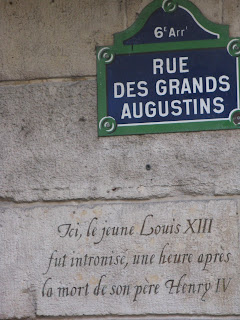Budapest's streetscape is a sprawling patchwork of crumbling 19th century grandeur, bleak Soviet era architecture, and a mishmash of what's cropped up, for better and for worse, since the fall of Communism in 1989. There are broad boulevards, stone plazas, quirky statuary, and an idyllic city park. And then there's the Danube, which separates the hills of Buda from the flatlands of Pest. The city was bombed heavily in World War II. Much was rebuilt and then neglected; in contrast to the bright white limestone of Paris, many buildings are dark with soot and pitted by acid rain. A few well managed rehabilitation projects suggest, however, that perhaps there's a brighter future ahead.
And for the tourist, there's plenty to keep one busy. Our two favorites were the House of Terror, the former headquarters of both the fascist and Communist secret police made into a chilling and compelling modern museum, and the Szechenyi baths. If you had told me two weeks ago, that I'd be enjoying a dip in an outdoor swimming pool on a day when the temperatures were hovering around 0 degrees Centigrade, I'd have told you that you were nuts. But with sunshine and a clear blue sky, an amazing Neoclassical setting, and a water temperature of 36 degrees Centigrade, it was hard to beat. Follow that with a hearty chicken paprikash and a nice glass of Hungarian red, and you've got a vacation.
 |
| Four story collage of victims of terror at the hands of fascists (German and Hungarian) and Communists |
 |
| Couldn't resist getting a shot of the "So Frenchy" sandwich. |
 |
| I found this inscription on the window of an elegant restaurant enigmatic -- why only for those with small appetites? |
 |
| Saturday and Sunday, we were treated to folk dancing performances on the plaza just outside the apartment where we stayed. |
















































